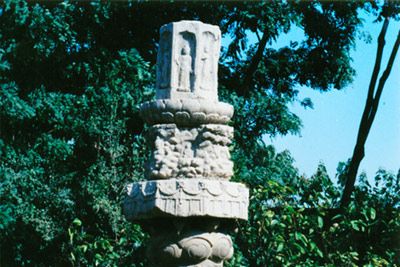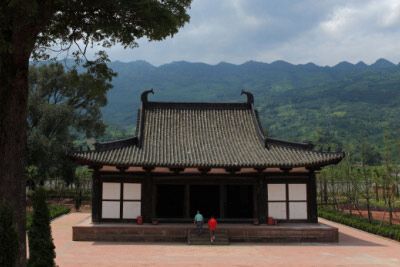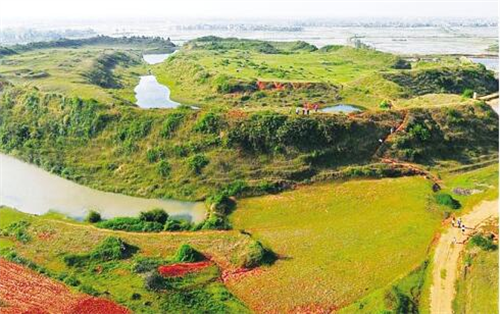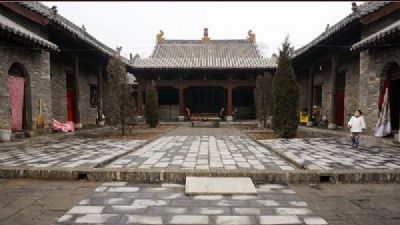Xianyang Shunling Mausoleum: An Essential Stop for History Buffs in Shaanxi
An Essential Guide to Visiting Xianyang Shunling Mausoleum
In This Guide
- An Essential Guide to Visiting Xianyang Shunling Mausoleum
- The Rich History of Xianyang Shunling Mausoleum
- Main Highlights: What to See at Xianyang Shunling Mausoleum
- Planning Your Visit: A Practical Guide
- Tickets, Hours, and Booking
- How to Get There
- Local Cuisine and Accommodation
- Frequently Asked Questions
- Final Thoughts on Your Trip
Nestled just 18 kilometers northeast of Xi’an, the Xianyang Shunling Mausoleum, or the Tomb of Empress Yang, invites visitors to delve into the intriguing world of Tang Dynasty history. This remarkable site, dedicated to the mother of China’s only female emperor, Wu Zetian, offers a glimpse into the grandeur and cultural significance of imperial burial practices during one of China’s most celebrated dynasties.
Spanning an impressive 1.1 million square meters, the mausoleum complex features a rectangular layout divided into inner and outer cities, showcasing the meticulous craftsmanship of ancient Chinese architecture. Visitors will be greeted by magnificent stone sculptures, including majestic lions and mythical creatures, which stand guard over the resting place of Empress Yang, also known as “Empress Xiaoming.” These remarkable stone carvings are not only artistic feats but also symbolize the protective spirits believed to accompany the deceased into the afterlife.
As a national key cultural relic, the Shunling Mausoleum is a testament to the reverence held for ancestors in Chinese culture, particularly for an empress who wielded significant power in a patriarchal society. Despite being slightly off the beaten path compared to other famous attractions, it remains a hidden gem that promises a peaceful, contemplative experience amidst lush farmland and tranquil surroundings.
For those seeking a deeper understanding of China’s rich history, the Shunling Mausoleum stands as a vital link to the past, inviting exploration and reflection on the legacy of a woman who defied conventions and shaped a dynasty. Whether you’re a history enthusiast or a casual traveler, this site offers a unique opportunity to connect with the storied past of imperial China.
The Rich History of Xianyang Shunling Mausoleum
The Xianyang Shunling Mausoleum, known as the tomb of Yang Shi—mother of the famous Empress Wu Zetian—is a significant historical site located approximately 20 kilometers northeast of Xianyang City. This mausoleum, built during the Tang Dynasty, holds not only the remains of Yang Shi but also serves as a testament to the grandeur of imperial burial traditions in ancient China.
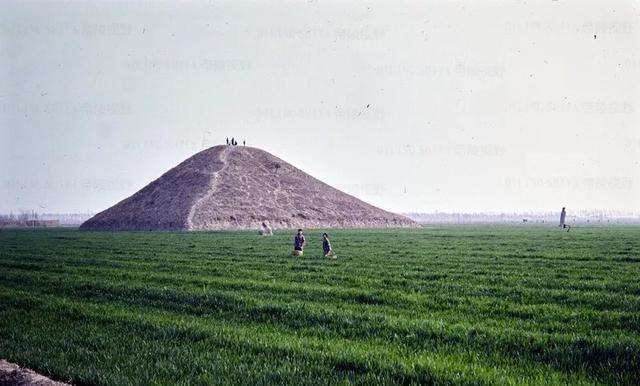
Xianyang Shunling Mausoleum.
Yang Shi passed away in 670 AD during the reign of Emperor Gaozong of Tang. Initially, she was interred with royal honors customary for a consort. However, after Wu Zetian ascended to the throne in 690 AD, she posthumously elevated her mother to the title of “Empress Xiaoming” and transformed the burial site into a grand mausoleum, thus renaming it Shunling. This act reflected Wu Zetian’s deep reverence for her mother, showcasing the unique relationship between the empress and her familial roots.
The mausoleum complex spans an impressive area of around 1.1 million square meters and is designed in a rectangular layout, featuring both an inner and outer city. The outer city, measuring 1,264 meters in length and 866 meters in width, is flanked by two earthen mounds known as “tumen,” which were traditional ceremonial gateways. The inner city, often referred to as the imperial city, sits to the north and is characterized by its fortified walls, which still exhibit the ancient rammed earth construction techniques.
Among the notable features of Shunling are its remarkable stone sculptures, including twelve stone figures, pairs of stone lions, and mythical creatures known as “Tianlu” (often referred to as unicorns). These sculptures, dating back over 1,300 years, are regarded as exceptional examples of Tang Dynasty stone-carving artistry. The grandeur of these carvings, particularly the imposing stone lions and the Tianlu, which symbolizes prosperity and the ability to discern good from evil, highlights the artistic and cultural achievements of the era.

Xianyang Shunling Mausoleum.
In 1961, Shunling was designated as a key cultural relic protection site in China, underscoring its importance in the context of Chinese heritage. Despite its historical significance, the site is relatively less frequented by tourists, offering a more tranquil experience for those interested in exploring its rich history and architectural beauty.
Today, Shunling stands not only as a memorial to an influential figure in Chinese history but also as a site that encapsulates the grandeur of Tang-era funerary practices and the enduring legacy of one of China’s most powerful women.
Main Highlights: What to See at Xianyang Shunling Mausoleum
Nestled approximately 20 kilometers northeast of Xi’an in the Weicheng District, the Xianyang Shunling Mausoleum is a significant historical site that offers a glimpse into the grandeur of the Tang Dynasty. This mausoleum is the final resting place of Yang Shi, the mother of Empress Wu Zetian, the only female emperor in Chinese history. Originally buried with royal honors in 670 AD, it was later transformed into a grand mausoleum after Wu Zetian ascended the throne.
The Shunling Mausoleum spans an impressive area of 1.1 million square meters and is characterized by its rectangular layout, featuring both an inner and an outer city. The outer city is particularly striking, measuring 1,264 meters in length and 866 meters in width, with two monumental earthen gates standing 50 meters apart at the southern entrance. The inner city, also known as the imperial city, is just as impressive, showcasing robust rammed earth walls that have endured through the centuries.
Visitors to the mausoleum are greeted by a series of exquisite stone sculptures, including twelve stone figures, pairs of stone lions and sheep, and an array of mythical beasts like the Tianlu (also known as the unicorn). The stone lions, notably the male, stand at an impressive height of over three meters, showcasing the artistry and craftsmanship of the Tang Dynasty. These statues are not only significant for their size but also for their symbolic guardianship over the mausoleum, embodying the might and reverence associated with Wu Zetian and her family.

Xianyang Shunling Mausoleum.
Despite being a national key cultural relic protection unit, Shunling remains relatively undiscovered by tourists, offering a serene atmosphere for those who venture here. The surrounding landscape is dotted with apple orchards, enhancing the rural charm of the site. The mausoleum is an ideal destination for history enthusiasts and travelers seeking to explore the rich tapestry of Chinese heritage, particularly the fascinating narratives surrounding the Tang Dynasty’s royal family.
In addition to its historical significance, visitors can enjoy leisurely walks through the site, taking in the blend of nature and culture, along with the captivating stories that echo from the past. Whether you’re an ardent history buff or simply looking for a peaceful retreat, Xianyang Shunling Mausoleum promises an enriching experience steeped in the mystique of ancient China.
Planning Your Visit: A Practical Guide
Practical Guide to Visiting Xianyang Shunling Mausoleum
Located approximately 20 kilometers northeast of Xi’an city in Shaanxi Province, the Xianyang Shunling Mausoleum, also known as the Tomb of Empress Wu Zetian’s Mother, is a significant historical site that offers visitors a glimpse into ancient Chinese royal burial practices and artistry. Here’s everything you need to know for a visit.
Getting There
By Car: The mausoleum is easily accessible by car. From Xi’an, take G108 or the Xi’an Ring Expressway towards Xianyang, and follow the signs to Shunling Mausoleum.
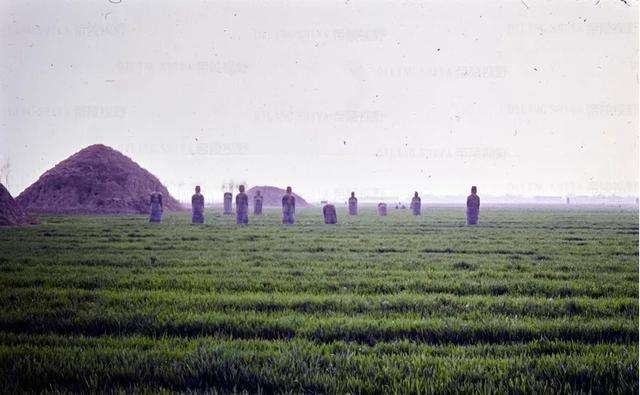
Xianyang Shunling Mausoleum.
By Public Transport: Public buses and taxis are also available from Xi’an to the mausoleum. Check local schedules as they may vary.
Opening Hours
The mausoleum is open to visitors from 8:00 AM to 6:00 PM every day. It’s advisable to arrive early to avoid crowds and have enough time to explore the site.
Admission Fees
Entry to the mausoleum is generally free, but special exhibitions or guided tours may incur a small fee. Always check for the latest information online or at the ticket office upon arrival.
What to See
-
The Layout: The mausoleum features a rectangular layout, comprising both an outer and an inner city, with a total area of approximately 1.1 million square meters. The imposing walls are made of rammed earth, showcasing ancient construction techniques.
-
Stone Statues: One of the highlights at Shunling is the impressive stone carvings, including twelve stone figures, lions, and unicorns, which are symbolic guardians of the tomb. The male lion, known for its imposing stature, is a must-see.
-
Cultural Significance: The mausoleum was constructed for Yang Shi, the mother of Wu Zetian, who later elevated her mother’s status posthumously. This site not only serves as a tribute to a powerful figure in Chinese history but also reflects the era’s burial customs and artistic expression.
-
Scenic Surroundings: The mausoleum is surrounded by picturesque farmland, including orchards with apple trees, contributing to a serene atmosphere that’s perfect for leisurely walks and photography.
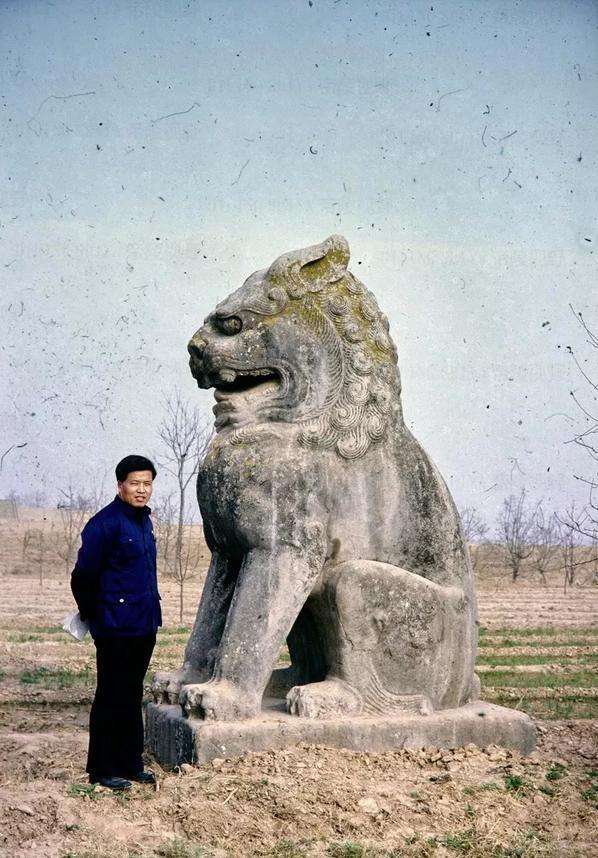
Xianyang Shunling Mausoleum.
Visitor Tips
-
Dress Comfortably: Wear comfortable shoes as you will be walking on uneven surfaces and exploring the expansive grounds.
-
Stay Hydrated: Bring water and snacks, especially if you plan to spend several hours exploring the site.
-
Respect the Site: As a national key cultural relic, it’s important to respect the rules and guidelines set forth for visitors, including not climbing on statues or disrupting the natural landscape.
-
Photography: Photography is generally allowed, but be mindful of any signs indicating restricted areas. Early morning or late afternoon light is perfect for photography.
-
Plan for Weather: The area experiences varying weather conditions, so check the forecast and dress accordingly. During summer, it can be hot, while winters can be cold.
Nearby Attractions
While visiting Xianyang Shunling Mausoleum, consider checking out other nearby historical sites:
– Qin Xianyang Palace Site Museum: Explore the remnants of the ancient Qin dynasty palace.
– Hanyangling Museum: This museum houses the tombs of Emperor Jing of Han and Empress Wang, showcasing another side of the region’s rich history.
– Wulingyuan Scenic Area: If time permits, venture to this UNESCO World Heritage site for stunning natural landscapes.
Final Thoughts
Xianyang Shunling Mausoleum is not just a burial site; it’s a testament to the grandeur of a bygone era and a vital piece of Chinese history. Whether you’re a history enthusiast or simply looking to enjoy the tranquility of ancient landscapes, this site offers a memorable glimpse into the past.
Tickets, Hours, and Booking
When planning your visit to the Xianyang Shunling Mausoleum, also known as the Tomb of Empress Wu’s Mother, it’s essential to know the ticketing details to ensure a smooth experience.
Ticket Information
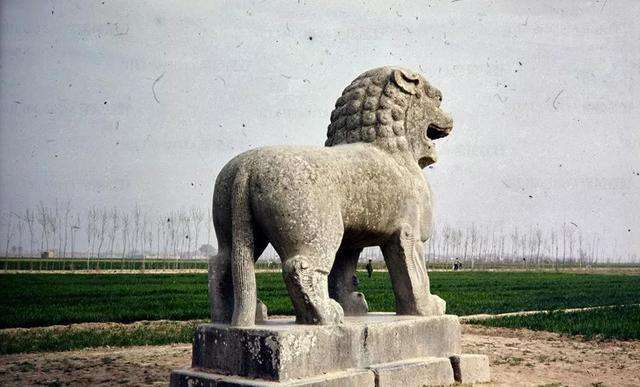
Xianyang Shunling Mausoleum.
The Xianyang Shunling Mausoleum is open year-round, allowing visitors to explore its historical significance at their convenience. The entrance fee is approximately 60 CNY for adults, with discounts available for students and seniors, typically around 30 CNY. Children under a certain height (usually around 1.2 meters) can enter for free, making it a great family-friendly destination.
Tickets can be purchased directly at the entrance, but for those looking to avoid potential queues during peak tourist seasons, it is advisable to book in advance through various travel platforms. These platforms often offer package deals that may include guided tours, making your visit even more enriching.
Operating Hours
The mausoleum is accessible from 8:00 AM to 6:00 PM daily, providing ample time for exploration. Given the site’s expansive area—approximately 1.1 million square meters—visitors are encouraged to allocate several hours to fully appreciate the historical monuments, including the impressive stone sculptures and the unique layout of the mausoleum complex.
Location and Accessibility
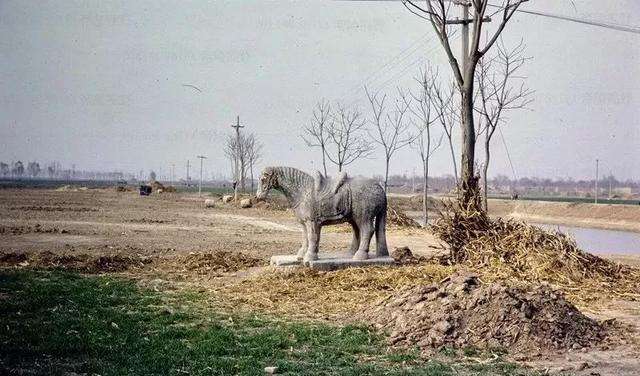
Xianyang Shunling Mausoleum.
Situated about 18 kilometers northeast of Xianyang City center, reaching Shunling Mausoleum is relatively straightforward. Public transportation options, such as buses and taxis, are available, and parking facilities are provided for those traveling by car.
By understanding these details, you can ensure a well-organized visit to one of China’s significant historical sites, immersing yourself in the rich heritage of the Tang Dynasty.
How to Get There
Getting to Xianyang Shunling Mausoleum can be an adventure in itself, offering several transportation options to suit various preferences and budgets. Located approximately 20 kilometers northeast of Xianyang city center, the mausoleum is accessible by public transport, private car, and taxis. Here’s a breakdown of the best ways to reach this significant historical site.
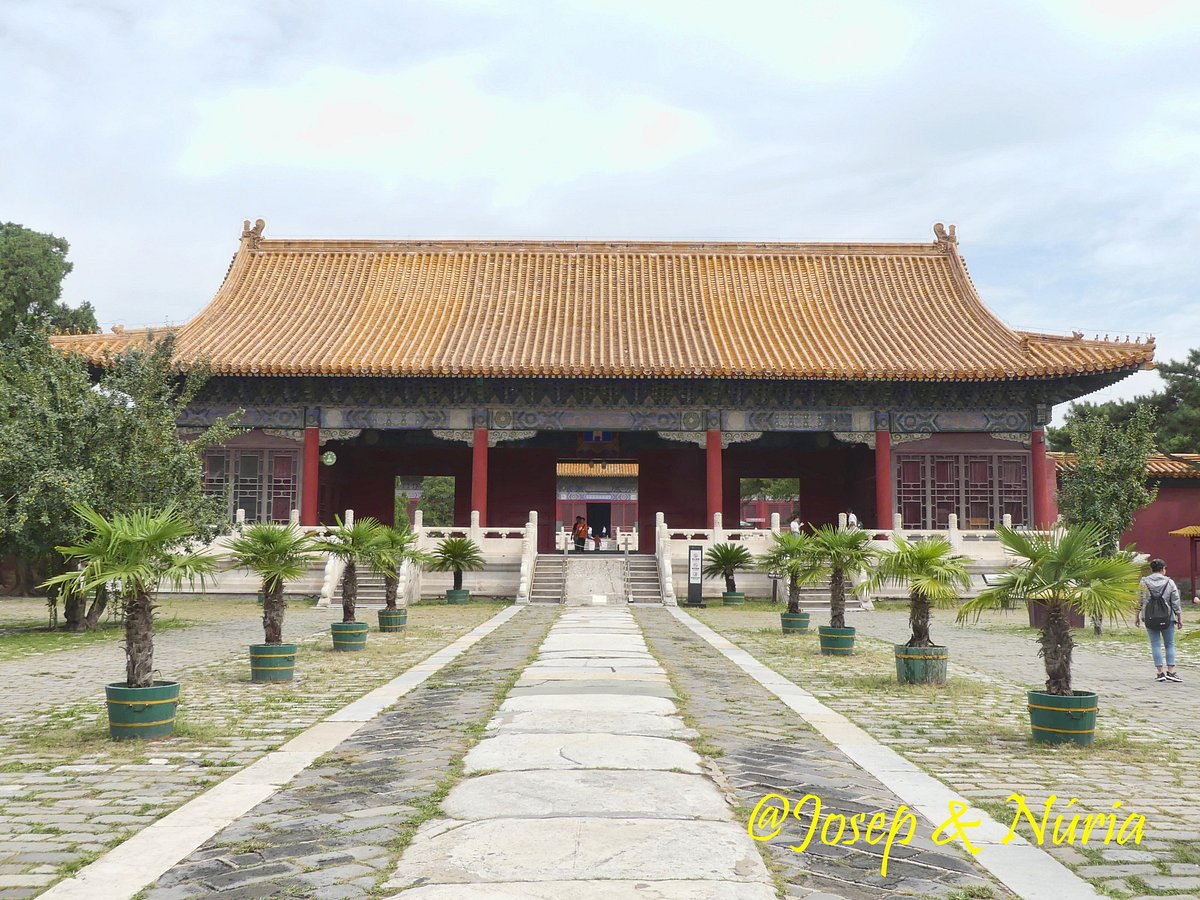
Xianyang Shunling Mausoleum.
By Public Transport
- Buses:
-
From Xianyang City, you can take bus routes that head towards the mausoleum. The most common options are buses that depart from the Xianyang Bus Station. Look for buses specifically marked for Shunling or nearby villages like Hanjia Village. The fare is typically very affordable, usually under ¥10, and the journey takes around 30-40 minutes, depending on traffic.
-
Metro and Bus Combination:
- If you’re coming from Xi’an, take Line 1 of the Xi’an Metro to the Xianyang station. From there, transfer to a local bus heading towards the mausoleum. This option might take a little longer but is very convenient for those already using the metro system.
By Taxi or Ride-Hailing Services
For a more direct and comfortable journey, consider taking a taxi or using ride-hailing apps like Didi. The drive from Xianyang city center to Shunling Mausoleum typically takes around 30 minutes, depending on traffic conditions. Fares will vary, but expect to pay around ¥60-¥100 for a one-way trip. This is an excellent option if you’re traveling with a group or carrying luggage, as it provides door-to-door service.
By Private Car
If you prefer the flexibility of having your own transportation, renting a car is a viable option. Several rental agencies operate in Xi’an and Xianyang, and driving in this region is relatively straightforward. The roads are well-marked, and the route to Shunling is scenic, allowing you to enjoy the countryside as you travel.
Important Tips
-
Timing: The mausoleum is open from 8:00 AM to 6:00 PM, so plan your visit accordingly. Arriving early can help you avoid crowds and enjoy a more peaceful exploration of the site.
-
Local Attractions: While visiting, consider exploring nearby attractions such as the Tang Shunling and other historical sites in the area, which can be easily accessed by the same modes of transportation.
-
Language: If you opt for a taxi or ride-hailing service, ensure you have the name of the destination written in Chinese characters to show the driver, as not all drivers may speak English.
With these transportation options and tips in hand, you can ensure a smooth and enjoyable visit to the Xianyang Shunling Mausoleum, immersing yourself in the rich history and culture of this fascinating site.
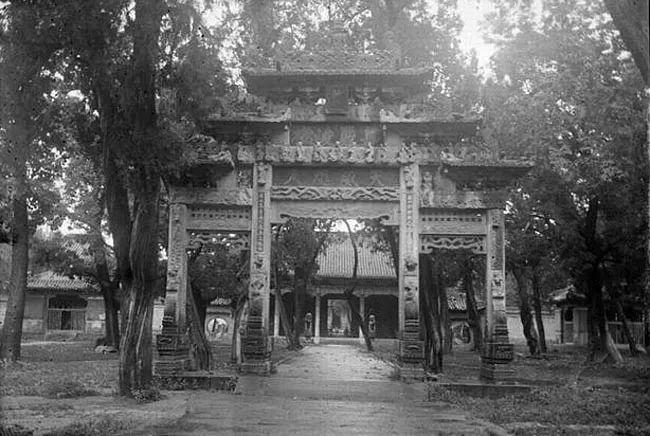
Xianyang Shunling Mausoleum.
Local Cuisine and Accommodation
When planning your visit to the Xianyang Shunling Mausoleum, it’s essential to consider local dining and lodging options that enhance your experience of this historical site.
Culinary Delights
Xianyang and its surrounding regions are known for their rich culinary heritage, and you’ll find a variety of dishes that showcase the flavors of Shaanxi Province. Here are some must-try local specialties:
-
Biang Biang Noodles (油泼面): Famous for their wide, hand-pulled texture, these noodles are often served with spicy chili oil and topped with vegetables or meat. Look for local eateries that specialize in this dish to truly appreciate its flavor.
-
Roujiamo (肉夹馍): Often referred to as the Chinese hamburger, this street food consists of a crispy flatbread filled with savory, braised pork. It’s a convenient option for a quick snack before or after your visit to the mausoleum.
-
Yangrou Paomo (羊肉泡馍): A hearty dish made with lamb and bread soaked in a flavorful broth. It’s perfect for those looking to indulge in a traditional meal after exploring the historical site.
For dining, consider restaurants near the mausoleum or in Xianyang city center, where you can find both local delicacies and international cuisine. Popular spots include Shuangliu Restaurant, known for its authentic Shaanxi dishes, and Xianyang Dumpling House, which offers a delightful variety of dumplings.

Xianyang Shunling Mausoleum.
Accommodation Choices
Xianyang provides a range of accommodation options suited to different budgets and preferences, ensuring a comfortable stay during your visit:
-
Luxury: If you’re looking for a high-end experience, the Westin Xian offers elegant rooms and top-tier amenities, including fine dining options and wellness facilities. It’s located about 30 kilometers from the mausoleum, providing a tranquil retreat after a day of exploring.
-
Mid-range: For a more moderate choice, consider the Xianyang Lake International Hotel. This hotel provides comfortable rooms and is conveniently located near popular attractions, making it a great base for your explorations.
-
Budget: If you’re traveling on a budget, the Hanting Express Xianyang offers clean, simple accommodations at an affordable price. It’s well-rated for its value and accessibility to public transportation.
-
Homestays: For a more local experience, consider looking for homestays or guesthouses in the nearby villages. These options often provide a more intimate setting and the chance to interact with local families.
No matter your choice, staying close to the mausoleum will allow you to immerse yourself in the rich history and culture of the area, making your visit to Shunling Mausoleum even more memorable.
Frequently Asked Questions
-
What is the historical significance of Xianyang Shunling Mausoleum?
The Xianyang Shunling Mausoleum is the tomb of Yang Shi, the mother of Empress Wu Zetian, who was the only female emperor in Chinese history. After her death in 670 AD, Wu Zetian honored her with a lavish burial, later upgrading the site to a mausoleum once she ascended the throne. -
Where is Xianyang Shunling Mausoleum located?
The mausoleum is situated approximately 18 kilometers northeast of Xianyang City in Shaanxi Province, China, specifically in the Weicheng District, near the village of Hanjiacun. -
What can visitors expect to see at the mausoleum?
Visitors can explore a vast area of about 1.1 million square meters that includes an inner and outer city, featuring impressive stone carvings, including guardian lions and mythical creatures like the Tianlu (unicorn). The site is known for its significant stone sculptures, which are among the largest and most well-preserved from the Tang Dynasty. -
Are there any entry fees for visiting the mausoleum?
Yes, there is typically an entrance fee required to access the mausoleum grounds. Prices may vary, so checking in advance or at the entrance is advisable. -
What are the opening hours for Xianyang Shunling Mausoleum?
The mausoleum is generally open from 8:00 AM to 6:00 PM daily. However, it’s recommended to verify the current hours before planning your visit, as they may change seasonally or for special events. -
Is transportation to the mausoleum accessible?
While the mausoleum is located outside Xianyang, transportation options may include local buses, taxis, or organized tours from the city. However, public transport may not be frequent, so planning ahead is crucial. -
What is the best time to visit Xianyang Shunling Mausoleum?
The ideal times to visit are during spring (March to May) and autumn (September to November) when the weather is mild and pleasant for outdoor explorations. Summer can be hot, and winter may bring cold temperatures. -
Are there any nearby attractions to visit after the mausoleum?
Yes, there are several historical sites in the vicinity, including the Five Mausoleums of the Tang Dynasty and the Qianling Mausoleum. These sites offer additional insights into the rich history of the Tang Dynasty and are worth exploring.
Final Thoughts on Your Trip
Visiting the Xianyang Shunling Mausoleum offers a unique glimpse into the grandeur of Tang Dynasty history and the personal life of one of China’s most intriguing figures, Empress Wu Zetian. This remarkable site not only commemorates the final resting place of her mother, Yang Shi, but also stands as a testament to the artistic and architectural prowess of its time. As you stroll through the expansive grounds adorned with impressive stone sculptures and majestic walls, you can feel the weight of history enveloping you.

Xianyang Shunling Mausoleum.
While Shunling may not be as widely known as other historical sites, its charm lies in its tranquil environment, where the legacy of the past is preserved amidst lush fields and serene landscapes. Whether you are a history enthusiast or simply seeking a peaceful retreat from the bustling modern world, this mausoleum invites you to reflect on the lives that shaped Chinese culture.
Make sure to take your time exploring the intricacies of the stone carvings and the stories they tell. A visit to the Shunling Mausoleum is not just a journey through history; it’s an opportunity to connect with the spirit of a bygone era. Embrace the serenity and significance of this site as you carve your own memories into the rich tapestry of Xianyang’s heritage.
